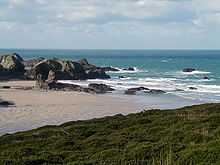Smuggling tunnel
Smuggling tunnels are secret passages used for the smuggling of goods and people. The term is also used where the tunnels are built in response to a siege.
Bosnia
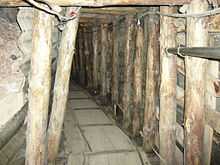
The Sarajevo Tunnel operated during the Siege of Sarajevo as a passage underneath the no-man's land of the city's (closed) airport, providing a vital smuggling link for the beleaguered city residents. Guns were smuggled into the city and people were smuggled out. After the war, the Sarajevo Tunnel Museum was built onto the historic private house whose cellar served as the entrance to Sarajevo Tunnel
It features in the British film Welcome to Sarajevo. A similar tunnel in an unknown city, probably Belgrade, features in the dark Serbian satire of conflict, Underground.
Gaza
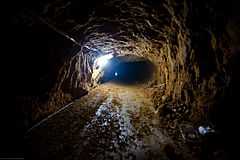
The Gaza Strip smuggling tunnels connect Egypt and the Gaza Strip, bypassing the Egypt-Gaza Strip barrier built by Israel along the international border established by the Israel-Egypt Peace Treaty. The tunnels pass under the Philadelphi corridor an area specified in the Oslo accords as being under Israeli military control, in order to secure the border with Egypt.
North America
Derby Tunnels

In 1801, Elias Hasket Derby Jr. extended the tunnel system in Salem, Massachusetts, in response to Thomas Jefferson's new custom duties.[1] Thomas Jefferson had ordered the local militias to help in the collection of this duty, but in Salem, Derby had hired the local militia (the nation's first national guard unit the 101st Engineer Battalion (United States) ) to dig the tunnels and hide the dirt in the five ponds in the local common. The funding for this extension was provided by the Salem Common Improvement Fund which had members like Superior Court Justice Joseph Story, Secretary of the Navy Benjamin Crowninshield, Congressman Jacob Crowninshield, Senator Nathaniel Silsbee, lawyer Daniel Webster, Senator William Gray, Senator Benjamin Pickman, Jr., the London banker and founder of JP Morgan Chase Joseph Peabody, and the Parker Brothers' father William Parker. The head of customs, Joseph Hiller, was also a member and Benjamin Crowninshield was the head of customs for Marblehead, Massachusetts. Presidents George Washington, James Monroe, and John Quincy Adams might also have walked in them. At the least they visited many homes that were connected to the tunnels. John Quincy Adams even dedicated the East India Marine Hall that has four sub-basement and is connected to the tunnels. The East India Marine Society Museum had many locations in town which were connected to the tunnels. They became the Peabody Academy of Science when the banker Joseph Peabody found them wanting in funds. Today they are the Peabody Essex Museum after they merged with the Essex Institute in 1992. The Essex Institute was founded by Edward Augustus Holyoke, founder of the The New England Journal of Medicine. The Essex Institute was also connected to the tunnels in their various locations. They were also used by Charles Lenox Remond to move runaway slaves through on the Underground Railroad. They were also popular during Prohibition.
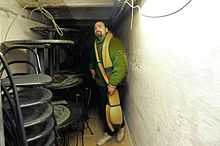
The tunnels extend three miles from the various wharfs in the town to an underground train station built by the superintendent of the Eastern Railroad John Kinsman. Along the way they connected several homes, stores, and banks to them. Two large brick homes were built throughout town at fixed distance to conceal the purchases of bricks needed for the tunnel. Also many large churches were made out of bricks to conceal their construction as well.
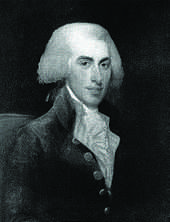
A new architectural style created by Samuel McIntire called Federalism was fashioned after Charles Bulfinch who would become the architect of the Capitol. In both of these men's designs the homes had exterior chimneys which connected the tunnels to the homes through watertight fireplace arches. These arches with their flues provided not only a dry entrance to the homes but also a draw system up through the chimneys for the tunnels. Charles Bulfinch connected his Looby Asylum, Essex Bank Building, and Old Town Hall to the tunnels in town. He would also build the tunnels leaving the State House in Boston and the National Capitol.[2]
US-Canada
In early 2005, a group of Canadian drug-smugglers took up the idea, and constructed a tunnel between a greenhouse in Langley, British Columbia, and the basement of a house in Lynden, Washington, which lay across the ditch marking the United States-Canada border (the house on the Langley side was on 0 Avenue ("Zero Avenue"), which runs parallel to the border and is the baseline of Langley's avenue-numbering system). They bought the two properties and began construction work. Authorities were alerted when a neighbor noticed the large-scale construction work being undertaken in the greenhouse. On inspection, it was apparent that tons of construction material were entering, and piles of earth were coming out.
It became known within a short time by both American and Canadian border authorities that a tunnel was being built. Video and audio devices were installed secretly by customs officials both at the termini and in the tunnel itself.
On July 14, the tunnel having been completed, the first packs of marijuana began going through. Officials raided the home soon after and arrested the three men. They then appeared before court in Seattle.[3]
US-Mexico
150 tunnels have been found since 1990, most of them incomplete.[4]
On January 25, 2006, a tunnel was found on the US-Mexico border by a joint US Drug Enforcement Administration, US Immigration and Customs Enforcement, and US Border Patrol task force. The 2,400-foot (730 m) long tunnel runs from a warehouse near the Tijuana airport to a warehouse in San Diego. When discovered, it was devoid of people, but it did contain 2 short tons (1,800 kg) of marijuana. It was 5 feet (1.5 m) high and up to 90 feet (27 m) deep. The floor was made of cement and the walls were exposed clay, with lights lining one side, a ventilation system to keep fresh air circulating, and a water drainage system to remove infiltrating ground water. Authorities said it was unclear how long the tunnel had been in operation.
On January 30, US Immigrations and Customs Enforcement agents arrested a Mexican citizen, who was linked to the tunnel via the US warehouse, operated by V&F Distributors LLC. On the Friday before, January 27, immigration authorities reportedly received information that the Mexican cartel behind the operation was threatening the lives of any agents involved with the construction or occupation of the tunnel. US Customs and Immigration, however, pledged to protect them as best they could. Authorities believe Tijuana's Arellano-Felix drug syndicate, or some other well-known drug cartel, was behind the building and operation of the tunnel.[5]
On November 26, 2010, a 2,600-foot (790 m) tunnel was discovered linking Tijuana to Otay Mesa, California.[6] In the same month another tunnel was discovered between these two cities. Both tunnels were discovered by a San Diego task force and are believed to be the work of Mexico's Sinaloa cartel. Over 40 short tons (36,000 kg) of cannabis was found and confiscated between the two.[7]
An analysis of US-Mexico smuggling tunnels, the US-Canada smuggling tunnel, and the smuggling tunnels in the Rafah, Gaza Strip was completed by Lichtenwald and Perri as part of a transnational analysis of smuggling tunnels.[8][9] Lichtenwald and Perri outlined sources and methods for evaluating which tunnels are used by different populations in various parts of the world to smuggling contraband that does not threaten a nation’s security, as opposed to tunnels that smuggle contraband that do threaten a nation’s security. Hybrid tunnels, tunnels that smuggle contraband that threaten a nation’s security as well as those that do not, are detailed.
In December 2012, a tunnel 3 feet in diameter and 100 yards long, with electricity and ventilation, was found near the Nogales, Arizona, port of entry.[10] Since 1990, there have been almost 170 tunnels found leading into Mexico, mostly in Arizona and California.[11] On February 14, 2014 another underground drug tunnel was discovered in Nogales. The tunnel spanned 481 feet (147 m), or longer than 1-1/2 American football fields. The tunnel was being used to smuggle marijuana and other drugs into the US. Another 590 pounds (270 kg) of marijuana was seized after federal agents stopped a vehicle they saw driving away from the residence. Some 46 pounds (21 kg) of marijuana and 0.5 pounds (0.23 kg) of heroin were found inside the tunnel. Three people have been arrested in connection with the bust.[12]
United Kingdom

Many villages on the southern coast of England have a local legend of a smugglers' tunnel; the entrances to most of the actual smugglers' tunnels have been lost or bricked up.
Some tunnel stories turn out to be very plausible, such as the tunnel at Hayle in Cornwall which really does seem to have been built specifically for smuggling. In other instances the tunnel either doubles as a storm drain or some other functional channel, or else is an extension of a natural fissure in the rock, as at Methleigh and Porthcothan.[13]
Beith in North Ayrshire was a notorious haunt of smugglers at one time, and legend has it that a tunnel ran from the town centre down to Kilbirnie Loch.
Ukraine—Slovakia
A 700-meters smuggling tunnel with a narrow gauge railway was revealed in July 2012 between Uzhgorod (Ukraine) and Vyšné Nemecké (Slovakia), at the border of Schengen Area. The tunnel used professional mining and security technologies. It was used primarily for smuggling of cigarettes.[14]
References
- ↑ Salem Secret Underground:The History of the Tunnels in the City. Books.google.com. Retrieved 2014-03-01.
- ↑ "salemtunneltour.com". salemtunneltour.com. Retrieved 2014-03-01.
- ↑ Ken MacQueen (2 November 2005). "B.C.'s tunnel busters". Macleans.ca. Archived from the original on 2010-12-06.
- ↑ "4 sophisticated drug tunnels found on border". KCRA (Tijuana, Mexico). Associated Press. 13 July 2012. Retrieved 6 January 2013.
- ↑ "Drug haul in secret border tunnel". BBC News. 27 January 2006.
- ↑ "Second Mexico-US drug tunnel found in Tijuana". BBC News. 26 November 2010.
- ↑ "Mexico's army finds drug tunnel to Arizona". GlobalPost. 2012-07-10. Retrieved 2014-03-01.
- ↑ Lichtenwald, Terrance G.; Perri, Frank S. "Smuggling Tunnels: The Need for a Transnational Analysis Inside Homeland Security Spring 2011" (PDF). 9, Issue 1.
- ↑ Lichtenwald, Terrance G.; Perri, Frank S. (2013). "Terrorist Use of Smuggling Tunnels" (PDF) 2. International Journal of Criminology and Sociology. pp. 210–226.
- ↑ "Mexican Authorities Find Smuggling Tunnel Equipped With Electricity Near Border". KILT (AM). Associated Press. 28 December 2012. Retrieved 9 January 2013.
- ↑ Billeaud (14 January 2014). "How tunnels are built, used along U.S.-Mexico border". KPBS (Nogales, Arizona). Associated Press. Retrieved 4 April 2014.
- ↑ "Largest-ever drug tunnel in Nogales found". azcentral.com. Retrieved 12 November 2014.
- ↑ "Hiding places where smugglers concealed contraband". Smuggling.co.uk. Retrieved 2014-03-01.
- ↑ "Slovaks find railway smuggling tunnel to Ukraine". Reuters. Retrieved 2014-03-01.
External links
| Wikimedia Commons has media related to Smuggling tunnels. |
